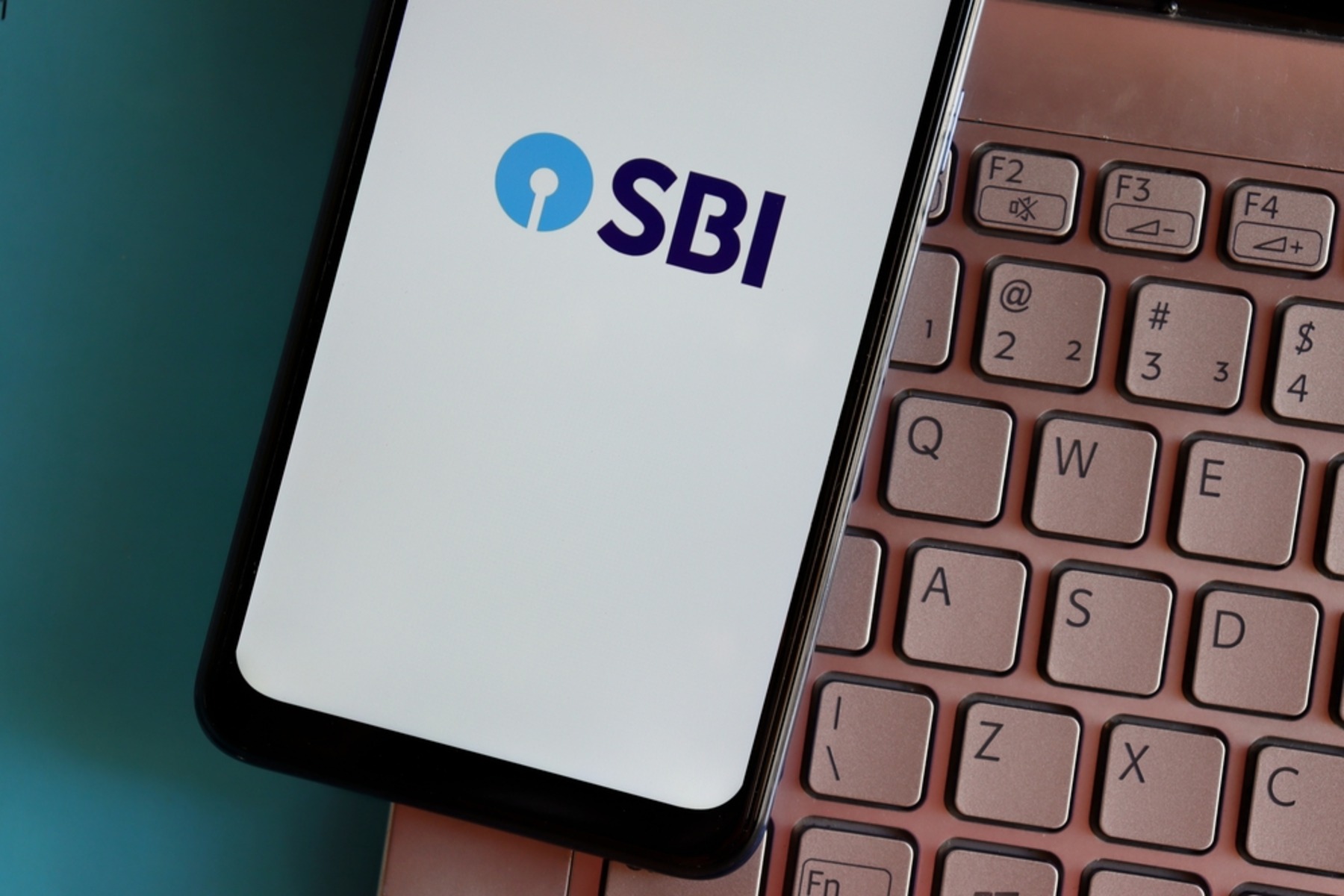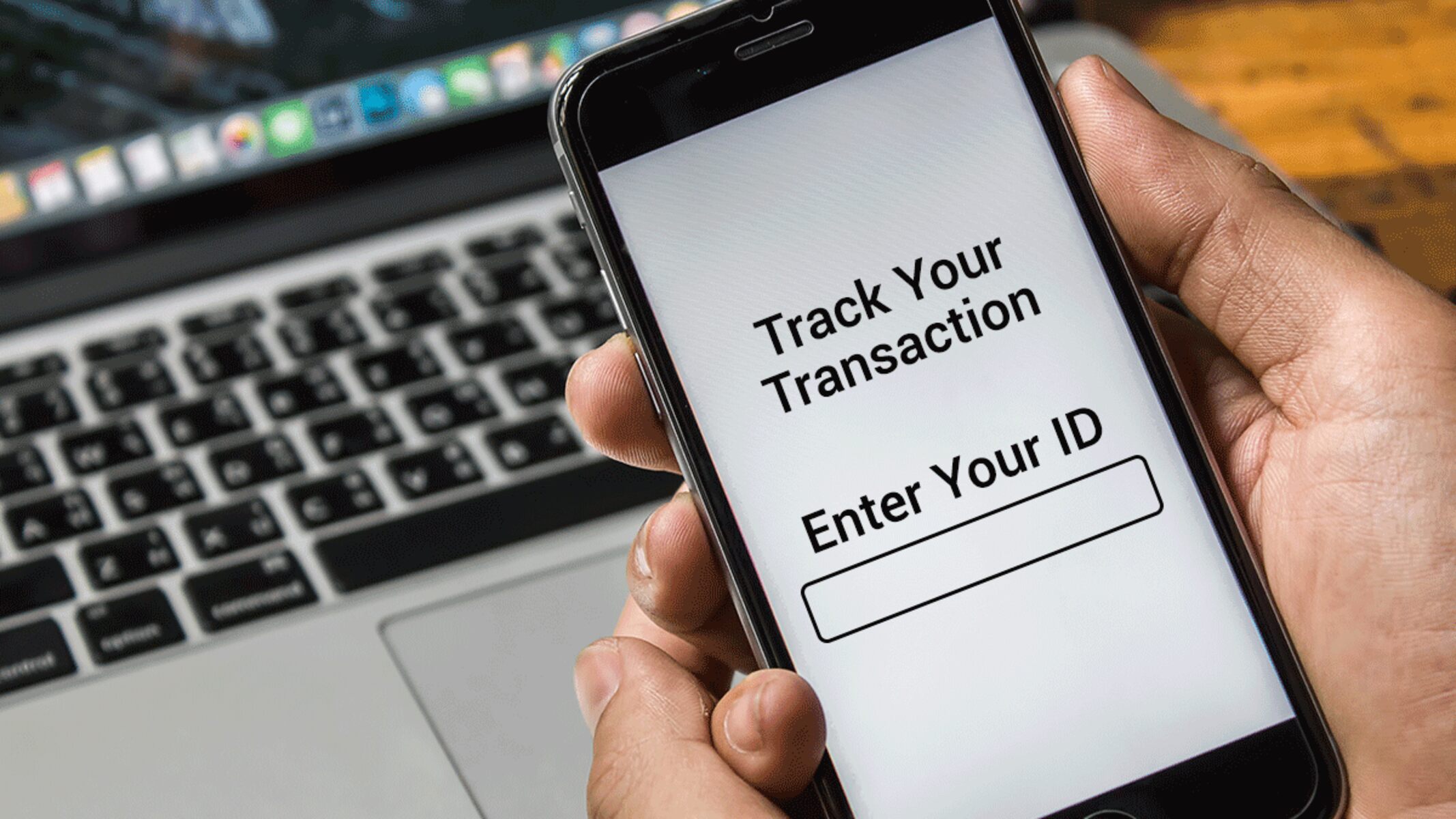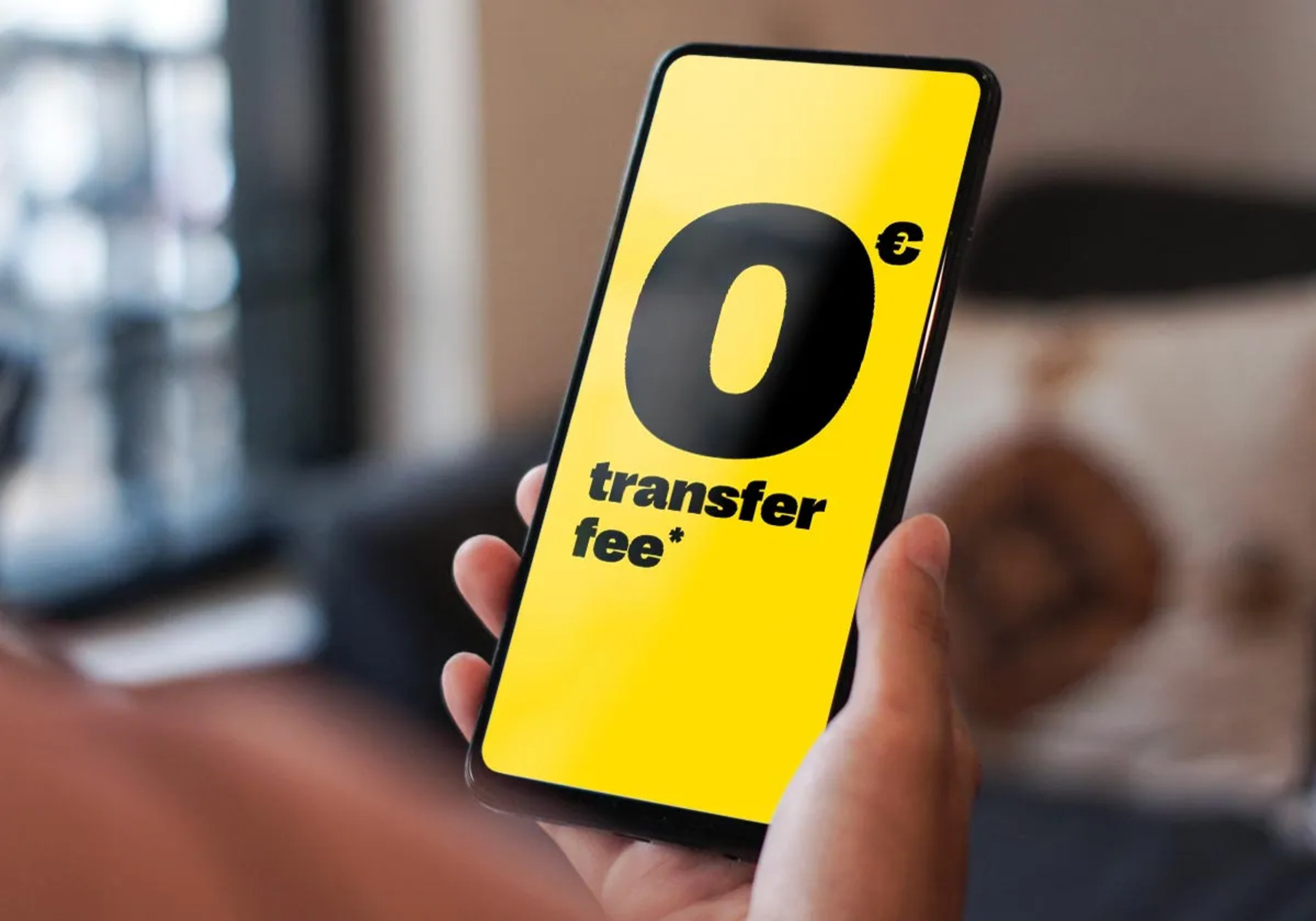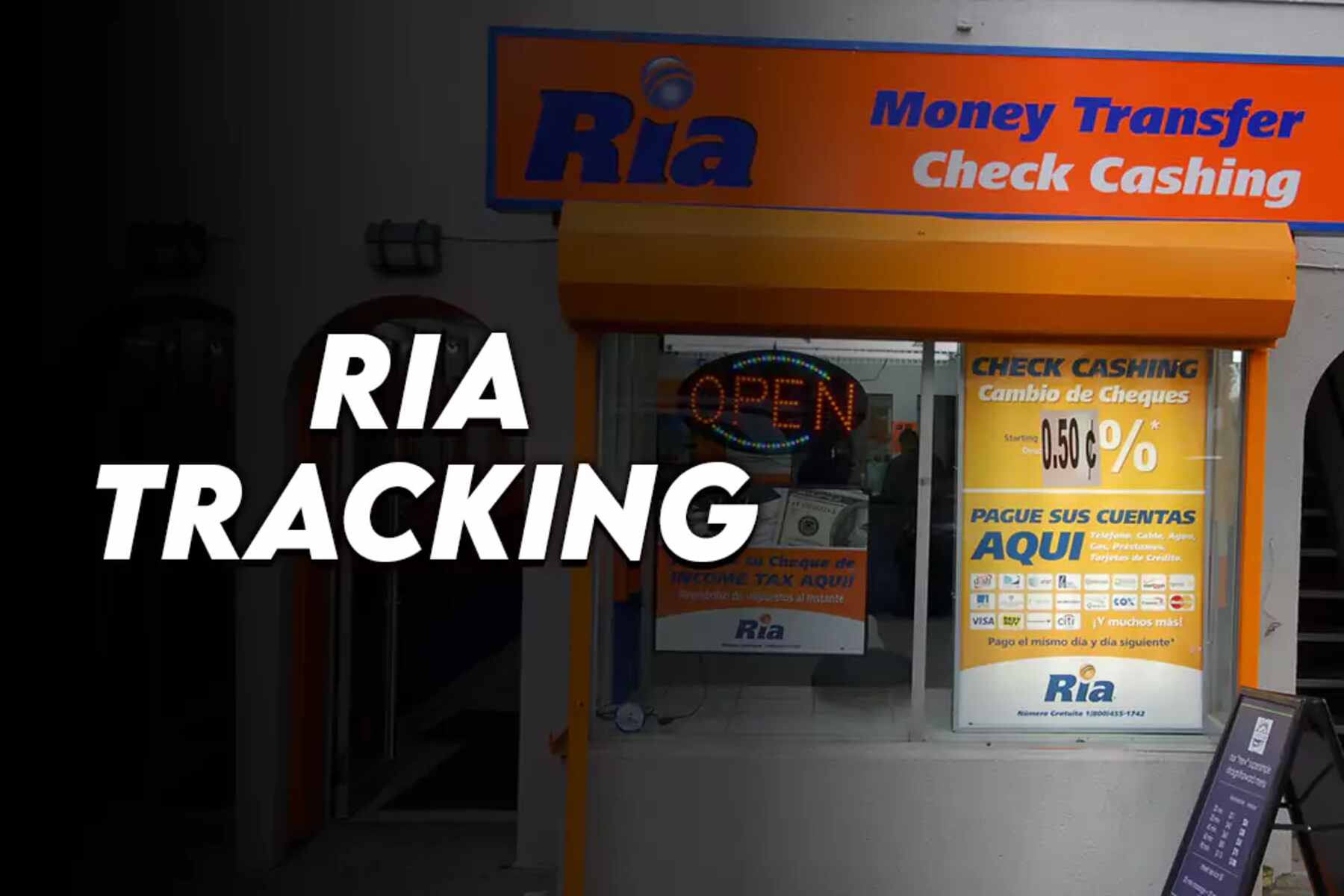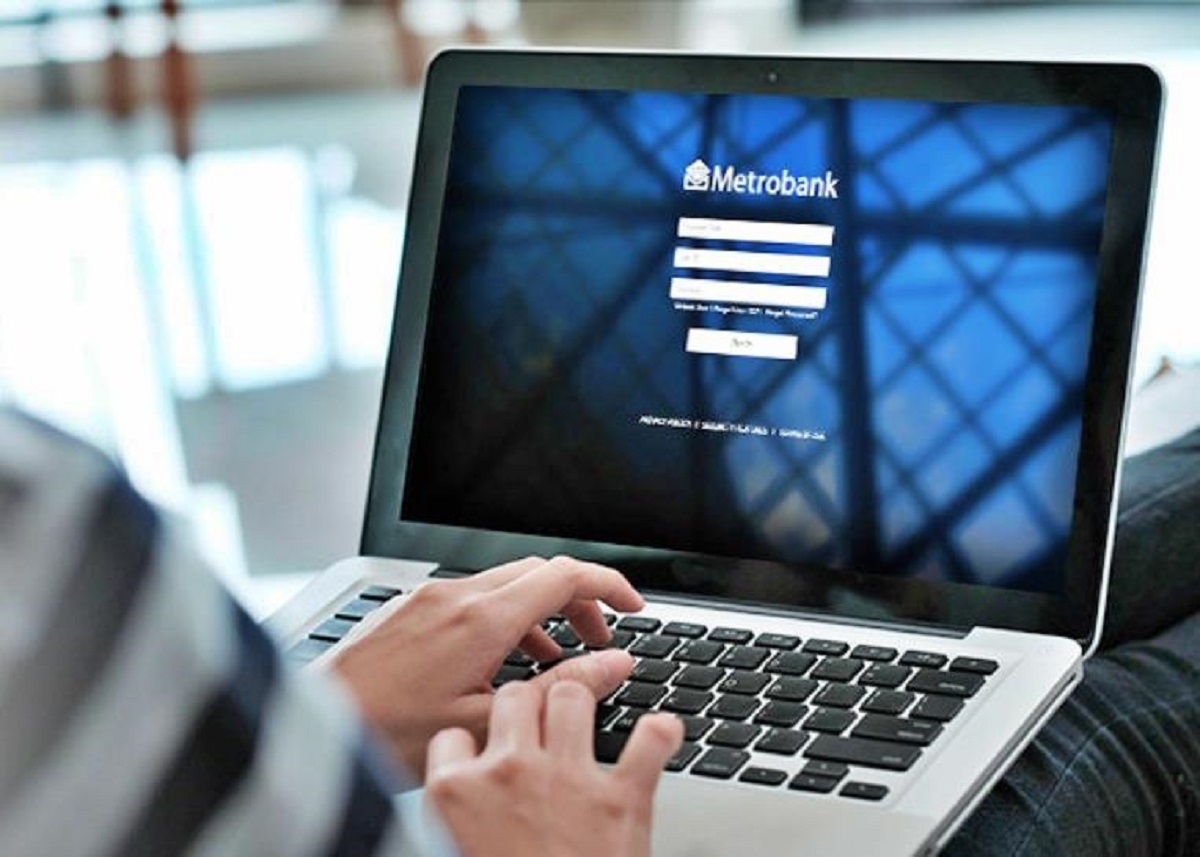Introduction
Welcome to the world of online money transfers, where sending money to family, friends, or businesses around the world is just a few clicks away. With the advancement of technology, online money transfer services have become increasingly popular, offering convenience, speed, and security. Whether you need to send funds internationally or domestically, this guide will walk you through the process of transferring money online, ensuring a hassle-free experience.
Gone are the days of lengthy paperwork, trips to the bank, and high fees associated with traditional money transfer methods. Online money transfers allow you to transfer funds from the comfort of your own home or on-the-go, using your computer or mobile device. The process is not only efficient but also provides various options to choose from, allowing you to find the best service that meets your specific needs.
Confused about where to start? Don’t worry, we’ve got you covered. In this guide, we will outline the major steps involved in an online money transfer, including setting up an online account, verifying your identity, adding banking information, choosing a reliable money transfer provider, and completing the transfer process. We will also touch upon important factors such as transfer fees, exchange rates, and security measures that you should consider before initiating a transaction.
Whether you are a first-time user or looking to switch to a different money transfer service, this guide will provide you with the necessary knowledge and insights to make informed decisions. So, let’s dive in and explore the world of online money transfers!
Setting up an online account
Before you can start transferring money online, you’ll need to set up an account with a reputable money transfer provider. Here are the steps to get you started:
1. Research and choose a money transfer provider: Start by researching different online money transfer providers. Look for providers that have a good reputation, positive customer reviews, and offer competitive rates. Consider factors such as transfer fees, exchange rates, transfer speed, and available destination countries.
2. Visit the provider’s website: Once you’ve selected a provider, visit their website and look for the option to sign up or create an account. Click on the appropriate link to begin the registration process.
3. Provide personal information: Fill out the required fields with your personal information, including your name, address, email address, and phone number. Make sure to provide accurate and up-to-date information to ensure smooth processing of your account.
4. Create a username and password: Choose a unique username and create a strong password for your account. It’s important to use a combination of uppercase and lowercase letters, numbers, and special characters to enhance the security of your account.
5. Verify your email address: Most money transfer providers will require you to verify your email address. Check your inbox for a verification email and follow the instructions provided to confirm your account.
6. Set up two-factor authentication: To add an extra layer of security to your account, consider enabling two-factor authentication. This feature typically requires you to enter a verification code sent to your mobile device in addition to your login credentials.
7. Read and agree to the terms and conditions: Take the time to read through the provider’s terms and conditions before agreeing to them. Familiarize yourself with their policies regarding fees, refunds, privacy, and usage guidelines.
8. Complete account verification: Depending on the provider, you may be required to verify your identity. This process typically involves providing additional documentation, such as a copy of your ID or proof of address. Follow the instructions provided to complete the verification process.
9. Fund your account: Once your account is set up and verified, you can proceed to fund your account by linking your bank account or adding a credit/debit card. This will enable you to transfer money from your account to the recipient’s account easily.
By following these steps, you’ll have a fully functional online account that allows you to initiate money transfers securely and conveniently. In the next section, we will discuss the importance of verifying your identity in the online money transfer process.
Verifying your identity
Verifying your identity is a crucial step when setting up an online money transfer account. Money transfer providers have strict regulations and compliance requirements to prevent fraud, money laundering, and other illegal activities. Here’s what you need to know about verifying your identity:
1. Understand the requirements: Each money transfer provider may have slightly different requirements for identity verification. Common documents may include a valid government-issued ID, such as a passport or driver’s license, proof of address (such as a utility bill or bank statement), and in some cases, additional documentation may be requested.
2. Submit the necessary documents: Once you’ve gathered the required documents, you’ll need to submit them to the money transfer provider. This can typically be done by uploading scanned copies or using their online verification system. Ensure that the documents are clear, legible, and meet the provider’s specifications.
3. Wait for approval: After submitting your documents, the money transfer provider will review and verify the information provided. This process may take a few hours to a few days, depending on the provider’s internal procedures. Be patient and allow sufficient time for your identity to be verified.
4. Follow up if necessary: If there are any issues or discrepancies with your submitted documents, the money transfer provider may contact you for clarification or additional information. Promptly respond to any requests and provide any necessary explanations or corrections to expedite the verification process.
5. Maintain privacy and security: When sharing personal identification documents online, it’s crucial to ensure the privacy and security of your information. Only provide documents to reputable money transfer providers with a secure website and encryption protocols in place. Additionally, be cautious of phishing attempts or fraudulent emails posing as verification requests.
6. Be prepared for periodic re-verification: In some cases, money transfer providers may require periodic re-verification of your identity, especially if you haven’t used the service for a certain period. This is a standard practice to maintain compliance and ensure the security of your account.
Verifying your identity is an important step to establish trust and security in the online money transfer process. By providing the necessary documentation and following the provider’s verification procedures, you can ensure a smooth and secure experience when transferring money online.
In the next section, we will discuss how to add and link your bank accounts or cards to your online money transfer account.
Adding and linking bank accounts or cards
Once you have set up your online money transfer account and your identity has been verified, the next step is to add and link your bank accounts or cards. This process ensures that you can easily transfer funds from your account to the recipient’s account. Here’s how to do it:
1. Log in to your online money transfer account: Access your account by entering your username and password on the money transfer provider’s website or mobile app. Once logged in, navigate to the account settings or profile section.
2. Choose the option to add bank accounts or cards: Look for the option to add bank accounts or cards within your account settings. This may be labeled as “Linked Accounts,” “Payment Methods,” or similar.
3. Provide the required bank account or card information: Fill in the necessary details of the bank account or card you want to link. This may include your account number, routing number, name on the account, and other relevant information. For linking cards, you may need to provide the card number, expiration date, and security code.
4. Verify ownership of the bank account or card: To ensure the security and legitimacy of the accounts or cards you are linking, the money transfer provider may require you to verify ownership. This can be done by confirming micro-deposits made to your bank account or by entering a verification code sent to your linked phone number or email address.
5. Link multiple bank accounts or cards (optional): If you have multiple bank accounts or cards that you want to use for money transfers, many providers allow you to link and manage multiple payment methods within your account. This gives you flexibility and convenience when choosing the funding source for each transfer.
6. Set a default payment method (optional): If you have multiple linked accounts or cards, you may have the option to set a default payment method. This means that when initiating a transfer, the default payment method will be pre-selected unless you choose a different one for that specific transaction.
7. Ensure the security of your linked accounts or cards: It’s crucial to keep your linked bank accounts or cards secure. Make sure to choose strong and unique passwords for your online money transfer account and avoid sharing this information with anyone. Regularly monitor your bank account and card statements for any unauthorized activity.
By following these steps, you can easily add and link your bank accounts or cards to your online money transfer account. This allows you to initiate transfers conveniently and eliminates the need to enter your payment information manually for each transaction. In the next section, we will discuss how to choose a reliable money transfer provider.
Choosing an online money transfer provider
With numerous online money transfer providers available, selecting the right one for your needs is essential. Here are some key factors to consider when choosing an online money transfer provider:
1. Reputation and reliability: Research the reputation and reliability of different money transfer providers. Look for providers that have been in the industry for a while, have positive customer reviews, and are known for their secure and efficient transfer processes.
2. Transfer fees and exchange rates: Compare the transfer fees and exchange rates offered by different providers. Some providers may have low or no transfer fees, but may compensate with less favorable exchange rates. Consider the total cost of the transfer, including both fees and exchange rates, to ensure you get the best value for your money.
3. Transfer speed: Consider the speed at which transfers are processed. Some providers offer immediate transfers, while others may have a slightly longer processing time. Depending on your urgency, choose a provider that aligns with your desired transfer speed.
4. Supported countries and currencies: Ensure that the money transfer provider supports both the country you are sending money from and the destination country. Additionally, check if they support the specific currency you want to transfer.
5. Payment options: Check the payment options available with each provider. Most providers allow bank account transfers, while some also offer options to use credit or debit cards. Choose a provider that offers your preferred payment method.
6. Mobile app and user experience: If you prefer to manage your money transfers on the go, consider the availability and functionality of the provider’s mobile app. Look for a user-friendly interface and features that enhance convenience and ease of use.
7. Customer support: Investigate the customer support available from each provider. Ensure that they offer prompt and helpful assistance in case you encounter any issues or have questions regarding your transfers.
8. Security measures: Verify the security measures implemented by the money transfer provider to protect your sensitive information and transactions. Look for features like encryption, two-factor authentication, and fraud detection to ensure the safety of your transfers.
9. Additional services: Some money transfer providers offer additional services like bill payments, mobile top-ups, or even investment options. If these services align with your needs, consider choosing a provider that offers a wider range of services.
By considering these factors, you can choose an online money transfer provider that meets your requirements in terms of cost, speed, convenience, and security. Take your time to research and compare different providers before making a decision. In the next section, we will delve into understanding transfer fees and exchange rates.
Understanding transfer fees and exchange rates
When it comes to online money transfers, understanding the transfer fees and exchange rates is crucial in order to make informed decisions and get the best value for your money. Let’s take a closer look at these important aspects:
Transfer Fees: Transfer fees are charges levied by money transfer providers for their services. The fee amount can vary based on factors such as the transfer amount, the destination country, the payment method chosen, and the provider itself. Some providers offer low or zero fees for certain transfers, while others may have a fixed fee structure regardless of the transfer amount. It’s important to consider the fees alongside other factors such as exchange rates to determine the overall cost of the transfer.
Exchange Rates: Exchange rates are the rates at which one currency is exchanged for another. Money transfer providers typically offer their own exchange rates, which may differ from the real-time market rates. The difference between the provider’s exchange rate and the market rate is known as the “exchange rate margin,” which is how the provider makes a profit. It’s important to compare exchange rates across different providers to ensure you’re getting a competitive rate. Keep in mind that exchange rates can fluctuate, so it’s a good idea to check them at the time of the transfer.
Total Cost of the Transfer: When evaluating transfer fees and exchange rates, it’s crucial to consider the total cost of the transfer. This includes both the fees charged and the impact of the exchange rate on the transferred amount. A provider with low fees may compensate with a less favorable exchange rate, which can affect the final amount received by the recipient. It’s recommended to calculate the overall cost of the transfer for each provider to determine the most cost-effective option.
Transparency and Visibility: Look for a money transfer provider that offers transparency and provides clear information about their transfer fees and exchange rates. Reputable providers will display their fees and rates prominently on their website or app. They may also provide a cost calculator or estimation tool to help you understand the total cost of your transfer before initiating it.
Hidden Charges and Promotions: Be aware of any potential hidden charges that may apply to your transfer. Sometimes, additional fees may be incurred for certain services or in specific circumstances. Always read the terms and conditions carefully to avoid surprises. Additionally, keep an eye out for promotional offers or special rates that providers may offer from time to time, as these can help you save money on your transfers.
By understanding transfer fees and exchange rates, you can make more informed decisions when choosing a money transfer provider and determine the most cost-effective way to send money. In the next section, we will discuss the process of initiating an online money transfer.
Initiating the money transfer
Once you have set up your online account, verified your identity, and considered the transfer fees and exchange rates, it’s time to initiate the money transfer. Here’s a step-by-step guide on how to begin the transfer process:
1. Log in to your online money transfer account: Access your account by entering your username and password on the money transfer provider’s website or app. If you haven’t done so already, make sure to log in before proceeding.
2. Select the “Send Money” or “Transfer” option: Look for the appropriate option to send money or initiate a transfer. This option can typically be found on the homepage or within your account dashboard. Click on it to start the process.
3. Choose the transfer amount and currency: Enter the amount you wish to transfer and choose the currency in which you want the recipient to receive the funds. Take note of any minimum or maximum transfer limits set by the provider or any limitations on certain currencies.
4. Select the payment method: If you have linked multiple bank accounts or cards, choose the payment method you wish to use for this particular transfer. If you only have one linked account or card, it may be pre-selected for you.
5. Review the transfer details: Before proceeding, carefully review the transfer details including the transfer amount, currency, and payment method. Ensure that all information is accurate to avoid any errors or issues with the transfer.
6. Calculate the estimated delivery time: Many money transfer providers offer an estimated delivery time for the funds to reach the recipient. Keep in mind that this time can vary based on factors such as the destination country and the payment method chosen. Take note of the estimated delivery time and consider it in case of any urgent transfers.
7. Confirm the transfer: Once you are satisfied with the transfer details, confirm the transfer to initiate the transaction. Some providers may require additional security measures such as entering a verification code sent to your mobile device.
8. Check for confirmation and transaction details: After confirming the transfer, you should receive a confirmation message or email with the transaction details. This may include a transaction ID, the amount transferred, and the expected delivery date. Keep this information for your records and reference if needed.
9. Monitor the progress of the transfer: Most money transfer providers offer tracking options that allow you to monitor the progress of your transfer. This allows you to stay updated on the status and estimated delivery time of your funds.
By following these steps, you can easily initiate an online money transfer. Always double-check the transfer details before confirming and keep track of the transaction for reference. In the next section, we will discuss the process of providing recipient information for the transfer.
Providing recipient information
Once you have initiated the money transfer, the next step is to provide the necessary recipient information. Accurate and complete recipient details are crucial to ensure a successful and smooth transfer. Here’s a step-by-step guide on providing recipient information:
1. Gather recipient details: Collect all the necessary recipient information before proceeding. This typically includes the recipient’s full name, contact information, and bank account details. If the transfer is going to a mobile wallet or if cash pickup is an option, ensure you have the relevant details as well.
2. Enter recipient details: Within your online money transfer account, navigate to the recipient details section. Fill in the recipient’s full name, email address, phone number, and any other required contact information. Double-check the spelling and accuracy of the information to avoid any errors.
3. Provide bank account details: If the transfer is going directly to the recipient’s bank account, carefully enter the bank account details, including the account number, the name of the bank, and the bank’s routing number or SWIFT/BIC code. Make sure to enter the information exactly as provided to you by the recipient or as stated on official bank documents.
4. Choose alternative delivery options (if applicable): Some money transfer providers offer alternative delivery options, such as cash pickup or transfers to mobile wallets. If these options are available and appropriate for your recipient, select the preferred method and provide any additional required details specific to that option.
5. Verify recipient information: Carefully review the recipient information you have provided before proceeding. Double-check all the details to ensure their accuracy. Even a small error, such as a misspelled name or an incorrect account number, can cause delays or issues with the transfer.
6. Save recipient information for future use (optional): Many money transfer providers allow you to save recipient information for future transfers. If you frequently transfer funds to the same recipient, consider saving their details securely within your account to streamline future transactions.
7. Proceed to payment and confirmation: After providing the recipient information, proceed to the payment section. Review the transfer details once again, including the transfer amount and any associated fees. Confirm the payment to complete the transaction.
8. Take note of the transaction reference number: Once the transfer is completed, you will typically receive a transaction reference number. This number serves as a unique identifier for the transfer and can be useful for tracking the progress or inquiring about the transfer should any issues arise.
By following these steps and providing accurate recipient information, you ensure that the transfer reaches the intended recipient smoothly. Take the time to review and verify the details to avoid any delays or complications. In the next section, we will discuss the importance of confirming transfer details.
Confirming transfer details
Before finalizing an online money transfer, it is essential to carefully review and confirm all the transfer details. Confirming transfer details ensures accuracy and helps prevent any potential issues or errors. Here’s a step-by-step guide on confirming transfer details:
1. Review the transfer amount: Verify that the transfer amount entered is correct and matches the intended amount you wish to send. Double-check for any decimal points or extra digits that may have been inadvertently added.
2. Check the recipient’s information: Ensure that the recipient’s details, such as their name and contact information, are accurate. Confirm that the recipient’s bank account or mobile wallet details are correctly entered if applicable.
3. Consider transfer fees: Take note of any transfer fees that may apply. Review the fees associated with the transfer and confirm that they align with your expectations. Consider whether the fees are reasonable in relation to the transfer amount and the level of service provided by the money transfer provider.
4. Verify the exchange rate: If you’re transferring funds to a different currency, make sure to double-check the exchange rate provided by the money transfer provider. Confirm that the rate is favorable and transparent. Compare it with the current market rate if necessary to ensure it’s reasonable.
5. Confirm the transaction speed: Depending on the provider and the transfer options chosen, there may be different transfer speed options available. Review the estimated delivery time and ensure it aligns with your expectations and any urgency you may have for the transfer.
6. Ensure sufficient funds: Check that you have enough funds in your linked bank account or card to cover the transfer amount and any associated fees. Confirm that the selected payment method is active and there are no limitations or pending transactions that may affect the transfer.
7. Double-check all details: Before confirming the transfer, go through all the information provided, including the recipient’s details, transfer amount, fees, and payment method. Verify each detail carefully to avoid any mistakes that may cause delays or complications.
8. Confirm the transfer: Once you have thoroughly reviewed and confirmed the transfer details, proceed to confirm the transfer. Pay attention to any additional verification steps that may be required, such as entering a verification code or password.
9. Save confirmation details: After completing the confirmation process, keep a record of the confirmation details, such as the transaction ID or confirmation number provided by the money transfer provider. This information may be useful for future reference or in case of any queries or issues that may arise.
By carefully confirming and reviewing all the transfer details, you can prevent errors, ensure an accurate transfer, and have peace of mind knowing that the transaction has been reviewed for accuracy. In the next section, we will discuss completing the online money transfer.
Completing the online money transfer
Once you have confirmed the transfer details, it’s time to complete the online money transfer. The completion process varies slightly between money transfer providers, but these general steps will guide you through the final steps:
1. Finalize the payment: After confirming the transfer details, you will typically be directed to the payment page. Follow the instructions provided to complete the payment. This may involve providing any necessary authentication methods, such as entering a secure code sent to your mobile device or using biometric verification.
2. Verify the payment: After the payment is submitted, you may receive a confirmation or verification screen. Verify that the payment has been processed and await the final response indicating the success of the transaction.
3. Check for transaction status: Depending on the money transfer provider, you may be able to view the transaction status immediately after completing the payment. Check if the transfer is labeled as “in progress” or “completed.” This information can give you peace of mind and allow you to track the progress of the transfer.
4. Save confirmation details: Once the online money transfer is completed, save the confirmation details provided by the money transfer provider. This may include a transaction reference number, confirmation email, or any other documentation confirming the successful transfer. These details can be used for reference or inquiries in case of any issues or discrepancies.
5. Inform the recipient (if necessary): If required, inform the recipient of the transfer and provide them with any necessary information, such as the estimated delivery time, pickup location (if applicable), or confirmation number. This ensures that they are aware of the incoming funds and can make the necessary arrangements on their end.
6. Track the transfer (if available): Many money transfer providers offer a tracking option that allows you to monitor the progress and status of your transfer. Take advantage of this feature to stay updated on the whereabouts of your funds and ensure they are reaching the recipient as intended.
7. Remain vigilant for notifications: Keep an eye out for any notifications or communication from the money transfer provider regarding the transfer. This may include confirmation emails, transaction updates, or any requests for additional information or verification to complete the process.
By following these steps, you can successfully complete the online money transfer. Remember to save the confirmation details, inform the recipient if necessary, and stay vigilant for any notifications or updates from the money transfer provider. In the next section, we will discuss tracking the progress of your transfer.
Tracking the progress of your transfer
Tracking the progress of your online money transfer allows you to stay updated on the status and whereabouts of your funds. While the tracking process may differ slightly between money transfer providers, here are some general guidelines on how to track the progress of your transfer:
1. Access your online money transfer account: Log in to your online account using your username and password. If you’re using a mobile app, open the app and navigate to the appropriate section for tracking transfers.
2. Look for the “Transfer Status” or “Track Transfer” option: Money transfer providers often have a specific section within the account or app dedicated to tracking the progress of your transfers. Look for an option like “Track Transfer,” “Transfer Status,” or something similar.
3. Enter the necessary information: Depending on the provider, you may need to enter certain details to track your transfer. This can include the transaction reference number, recipient’s name, or other specific identifiers associated with the transfer.
4. Check the transfer status: Once you have entered the necessary information, your money transfer provider will display the status of your transfer. This can indicate whether the transfer is “in progress,” “completed,” or any other relevant status updates.
5. Monitor for updates: Some money transfer providers offer real-time updates on the progress of your transfer. This can include notifications when the funds are sent, received, or available for the recipient to access. Keep an eye out for any updates or notifications to stay informed about the transfer’s progress.
6. Seek customer support (if needed): If you encounter any issues or concerns while tracking your transfer, reach out to the money transfer provider’s customer support. They can provide additional information, answer your questions, or assist with any problems or delays you may experience.
7. Be aware of estimated delivery times: Money transfer providers often provide estimated delivery times for your funds to reach the recipient. Keep in mind that these are approximate and can vary depending on various factors such as the destination country, payment method, and any potential delays in the banking system or local processes.
8. Stay updated through notifications: Some money transfer providers offer notifications via email or mobile apps to keep you informed about the progress of your transfer. Enable these notifications to receive important updates and alerts regarding your money transfer.
By following these steps and utilizing the tracking features provided, you can stay informed about the progress of your online money transfer. This allows you to have peace of mind and ensures that your funds are reaching the recipient as intended. In the next section, we will discuss receiving confirmation and notification of your completed transfer.
Receiving confirmation and notification
After completing an online money transfer, it’s important to keep an eye out for confirmation and notification from the money transfer provider. These communications serve as proof that the transfer has been completed and provide important information about the transfer. Here’s what you need to know about receiving confirmation and notification:
1. Confirmation email: Many money transfer providers send a confirmation email once the transfer is successfully completed. This email typically includes information such as the transaction reference number, transfer amount, recipient’s name, and estimated delivery time. Check your email inbox and spam folder for this confirmation email.
2. Transaction details screen: Some money transfer providers display a confirmation screen immediately after you complete the transfer. This screen may show the transaction details, such as the reference number, transfer amount, and recipient’s information. Take a screenshot or save this information for your records.
3. Mobile app notifications: If you’re using a mobile app, the money transfer provider may send notifications to your device to inform you about the status and completion of the transfer. Ensure that you have enabled notifications from the app to receive these updates in real-time.
4. SMS or text message: In some cases, money transfer providers send SMS or text messages to inform you about the completion of the transfer. These messages may include important details such as the transaction reference number and any instructions or next steps for the recipient.
5. Transaction history within your account: Log in to your online money transfer account and check the transaction history section. This section will show a record of all completed transfers, including the relevant details and a status update confirming that the transfer has been processed successfully.
6. Save confirmation details: Save the confirmation details, such as the transaction reference number, confirmation email, or screenshot of the confirmation screen. These details can serve as proof of the completed transfer and can be useful for future reference or in case of any queries or issues that may arise.
7. Verify with the recipient: Once the transfer is completed, you may want to inform the recipient and provide them with any relevant information, such as the transaction reference number or estimated delivery time. This ensures that they are aware of the transfer and can expect the funds to arrive.
8. Seek customer support (if needed): If you do not receive a confirmation or notification after completing the transfer, or if you have any concerns or questions, don’t hesitate to reach out to the money transfer provider’s customer support. They can assist you, provide additional information, or address any issues that may arise.
Receiving confirmation and notification is important to ensure that you have proof of the completed transfer and that all necessary information is provided to both you and the recipient. Keep these communications safe and refer to them if needed. In the next section, we will discuss troubleshooting common issues that may arise during an online money transfer.
Troubleshooting common issues
While online money transfers are generally smooth and efficient, there may be instances where you encounter common issues. Understanding how to troubleshoot these issues can help you resolve problems and ensure a successful transfer. Here are some common issues and their potential solutions:
1. Transfer delays: If your transfer takes longer than expected, check the estimated delivery time provided by the money transfer provider. Keep in mind that transfer times vary based on factors such as the destination country, payment method, and any potential delays in the banking system. If the transfer exceeds the estimated delivery time, contact the money transfer provider’s customer support for assistance.
2. Incorrect recipient information: If you have entered incorrect recipient information, such as the wrong account number or misspelled name, contact the money transfer provider immediately. They may be able to assist you in correcting the information or canceling the transfer before it’s processed. However, if the transfer has already been completed, it may be challenging to recover the funds.
3. Failed transfers: If a transfer fails, check if there are sufficient funds in your linked bank account or card. Ensure that your payment method is active and not restricted. If the issue persists, contact the money transfer provider for assistance. They can help troubleshoot the reason for the failed transfer and guide you on the necessary steps to resolve the issue.
4. Exchange rate discrepancies: If you suspect a significant discrepancy between the provider’s exchange rate and the market rate, double-check their terms and conditions. Money transfer providers often mention that their exchange rates may have a margin to cover costs and generate profit. However, if you believe there is an unjustifiable difference, contact customer support for clarification and resolution.
5. Unauthorized transactions or fraud: If you notice any suspicious or unauthorized transactions on your online money transfer account, contact the money transfer provider’s customer support immediately. They will guide you through the necessary steps to secure your account, investigate the issue, and if required, initiate processes to recover funds or prevent further fraudulent activity.
6. Unresponsive customer support: If you experience difficulty reaching customer support or receive unsatisfactory assistance, persist in your efforts. Reach out through different contact methods, such as phone support, live chat, or email. Keep records of your attempts to contact them and consider escalating the issue to higher levels of management if necessary.
7. Limited transfer options: If you require specific transfer options not offered by your current money transfer provider, explore other providers in the industry. Compare their services, fees, rates, and transfer options to find one that aligns with your needs. Consider switching providers to gain access to a wider range of transfer options.
8. Data security concerns: If you have concerns about the security of your personal and financial information, review the privacy and security policies of your chosen money transfer provider. Ensure that they use SSL encryption for data transmission and store customer information securely. If you’re still apprehensive, consider researching and opting for providers with robust security measures in place.
By troubleshooting common issues and actively seeking resolutions, you can overcome problems that may arise during an online money transfer. Remember to contact the money transfer provider’s customer support for assistance when needed. In the next section, we will discuss ensuring the security of your online money transfer.
Ensuring the security of your online money transfer
When transferring money online, ensuring the security of your funds and personal information is paramount. Here are some essential steps to consider for a secure online money transfer:
1. Choose a reputable money transfer provider: Select a trusted and well-established money transfer provider with a good reputation. Look for providers that have robust security measures in place and employ encryption protocols to safeguard your data.
2. Verify the provider’s security features: Before initiating a transfer, investigate the security features offered by the money transfer provider. Ensure they use Secure Socket Layer (SSL) encryption to protect your data during transmission. Look for additional security features like two-factor authentication for added protection.
3. Use a secure internet connection: When initiating an online money transfer, ensure that you are using a secure internet connection. Avoid using public Wi-Fi networks, as they can be vulnerable to attacks and compromise the confidentiality of your information. Instead, use your home network or a trusted private connection.
4. Keep your login credentials secure: Safeguard your online money transfer account by using strong and unique passwords. Avoid using easily guessable combinations and consider using a password manager to securely store your login credentials. Additionally, enable two-factor authentication if it is offered by the provider.
5. Be cautious of phishing attempts: Be vigilant for phishing attempts or fraudulent emails pretending to be from the money transfer provider. Never share your login credentials or personal information in response to unsolicited emails. Always access the provider’s website directly through a trusted source.
6. Regularly monitor your account: Keep a close eye on your online money transfer account and transaction history. Regularly review the activity to detect any suspicious transactions or unauthorized access. Report any discrepancies or concerns to the money transfer provider immediately.
7. Update your software and devices: Ensure that your devices, including computers, smartphones, and tablets, have up-to-date and patched operating systems and security software. Regularly install updates to fix vulnerabilities and protect against potential threats.
8. Educate yourself about scams and fraud: Stay informed about the latest scams and fraud techniques targeting online money transfers. Be cautious of unsolicited calls, emails, or messages requesting personal or financial information. Report any suspicious activities to the relevant authorities or the money transfer provider.
9. Keep personal information private: Avoid sharing your personal or financial information, such as your online money transfer account details or passwords, with anyone. Legitimate money transfer providers will never ask for sensitive information through unsolicited channels.
By following these security measures, you can help ensure the safety of your online money transfer. Remember to be proactive in securing your account and to remain vigilant for any suspicious activities or potential threats. In the next section, we will summarize the key points discussed in this guide.
Conclusion
Transferring money online has become a convenient and efficient way to send funds to family, friends, or businesses around the world. By following the steps outlined in this guide, you can navigate the process of setting up an online account, verifying your identity, linking bank accounts or cards, choosing a reliable money transfer provider, understanding transfer fees and exchange rates, initiating the transfer, providing recipient information, confirming transfer details, completing the transfer, tracking its progress, and receiving confirmation and notification.
Throughout this guide, we have emphasized the importance of selecting a reputable provider, considering transfer fees and exchange rates, ensuring the security of your transactions, and troubleshooting common issues that may arise. By taking these factors into account, you can have a seamless and secure online money transfer experience.
Remember to research different money transfer providers, compare their fees and rates, and choose the one that best suits your needs. While transferring money online offers convenience, it is essential to prioritize security by using strong passwords, being cautious of phishing attempts, and regularly monitoring your account for any suspicious activity.
Lastly, stay informed about the latest scams and fraud techniques to protect yourself and your funds. By staying vigilant and taking preventive measures, you can have peace of mind when transferring money online.
We hope that this guide has provided you with valuable insights and guidance on how to successfully navigate the process of online money transfers. With the right knowledge and precautions, you can safely and securely send money to your intended recipients, no matter where they are located. Happy transferring!









